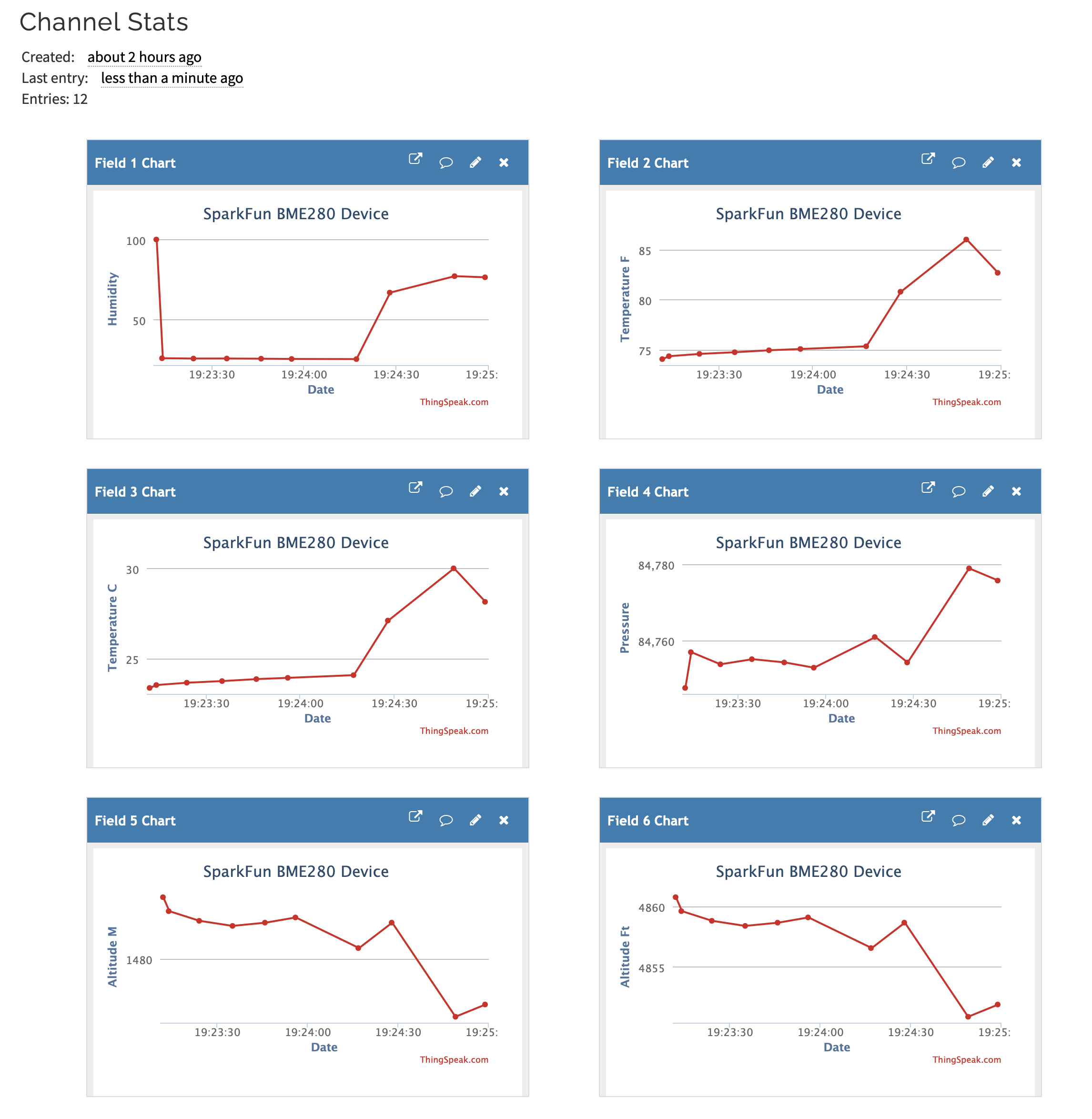 |
flux sdk
v01.02.02-5-g550ff88
Embedded C++ SDK
|
 |
flux sdk
v01.02.02-5-g550ff88
Embedded C++ SDK
|
One of the key features of the Flux Framework is it's simplified access to IoT service providers. This document outlines how a ThinkSpeak output is used by the Flux framework
The following is covered by this document:
The structure of ThingSpeak is based off of the concept of ***Channels**, with each channel supporting up to eight fields for data specific to the data source. Each channel is named, and has a unique ID associated with it. One what to think of it is that a Channel is a grouping of associated data values or fields.
The fields of a channel are enumerated as ***Field1, Field2, ..., Field8**, but each field can be named to simplify data access and understanding.
As data is reported to a ThingSpeak channel, the field values are accessible for further processing or visualization output.
The Flux Framework is constructed around the concept of Devices which are often a type of Sensor that can output a set of data values per observation or sample.
The concept of Channels that contain Fields in ThingSpeak is similar to the Devices that contain Data within Flux, and this similarity is the mapping model used by the Flux ThingSpeak connector. Specifically:
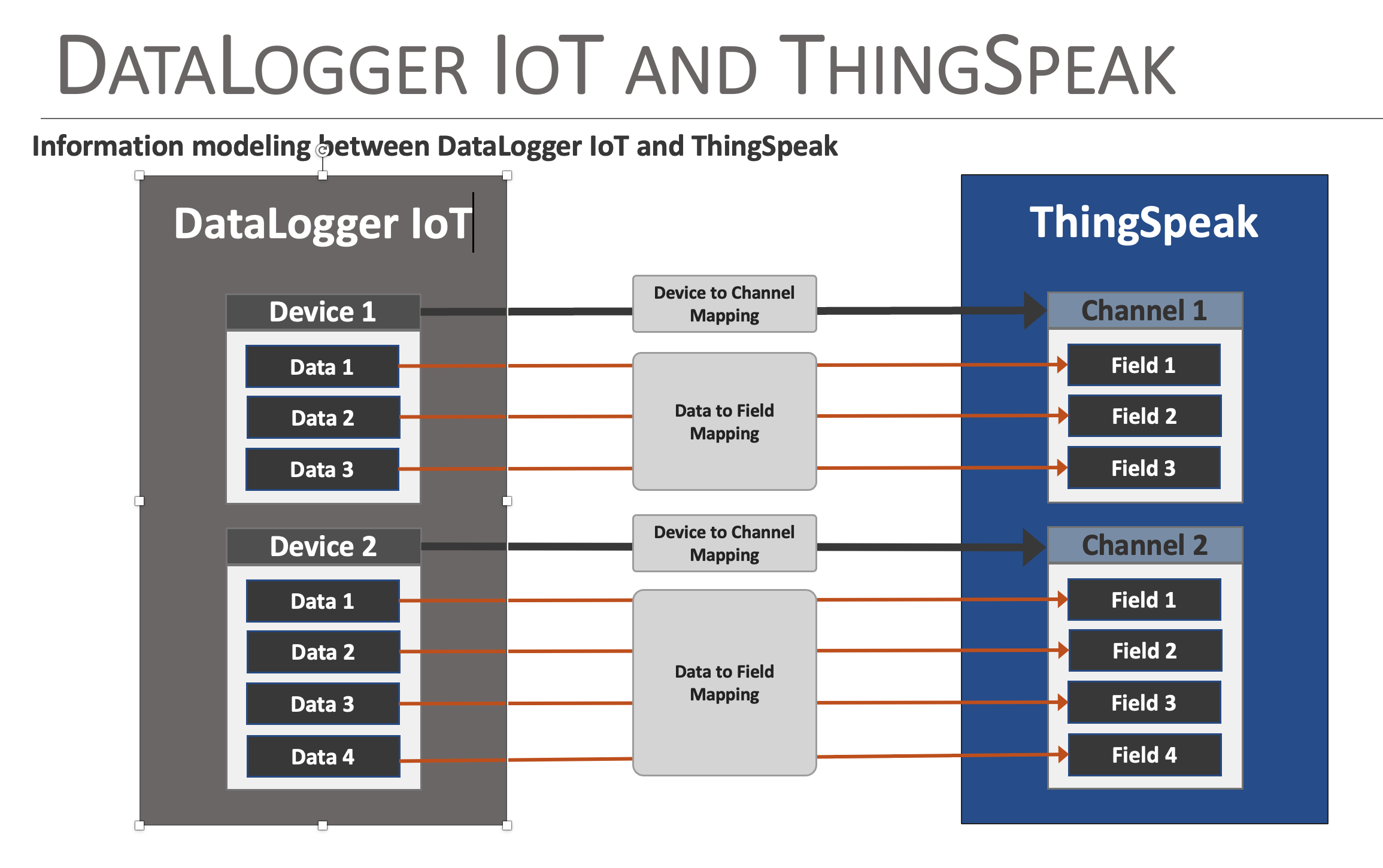
During configuration of the Flux ThingSpeak connector, the mapping between the Flux Device and ThingSpeak channel is specified. The data to field mapping is automatically created by Flux following the data reporting order from the specific Flux device driver.
The following discussion outlines the basic steps taken to create a Channel in ThingSpeak and then connect it to a Flux Device.
First step is to log into your ThingSpeak and create a Channel. Once logged into your ThingSpeak account, select Channels > My Channels menu item and on the My Channel page, select the New Channel button.
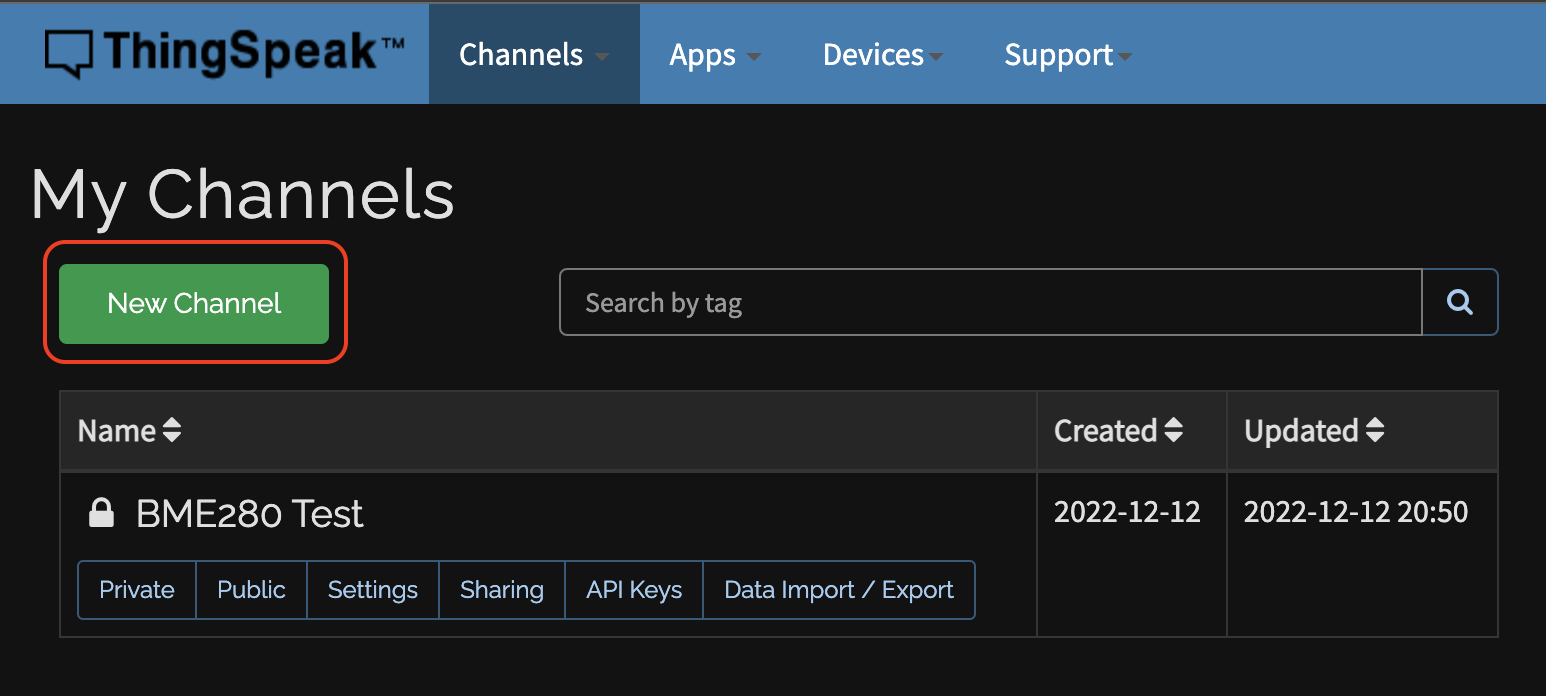
On the presented channel page, name the channel and fill in the specific channel fields. The fields should map to the data fields reported from the Flux Device being linked to this channel. Order is important, and is determined by looking at output of a device to the serial device (or reviewing the device driver code).
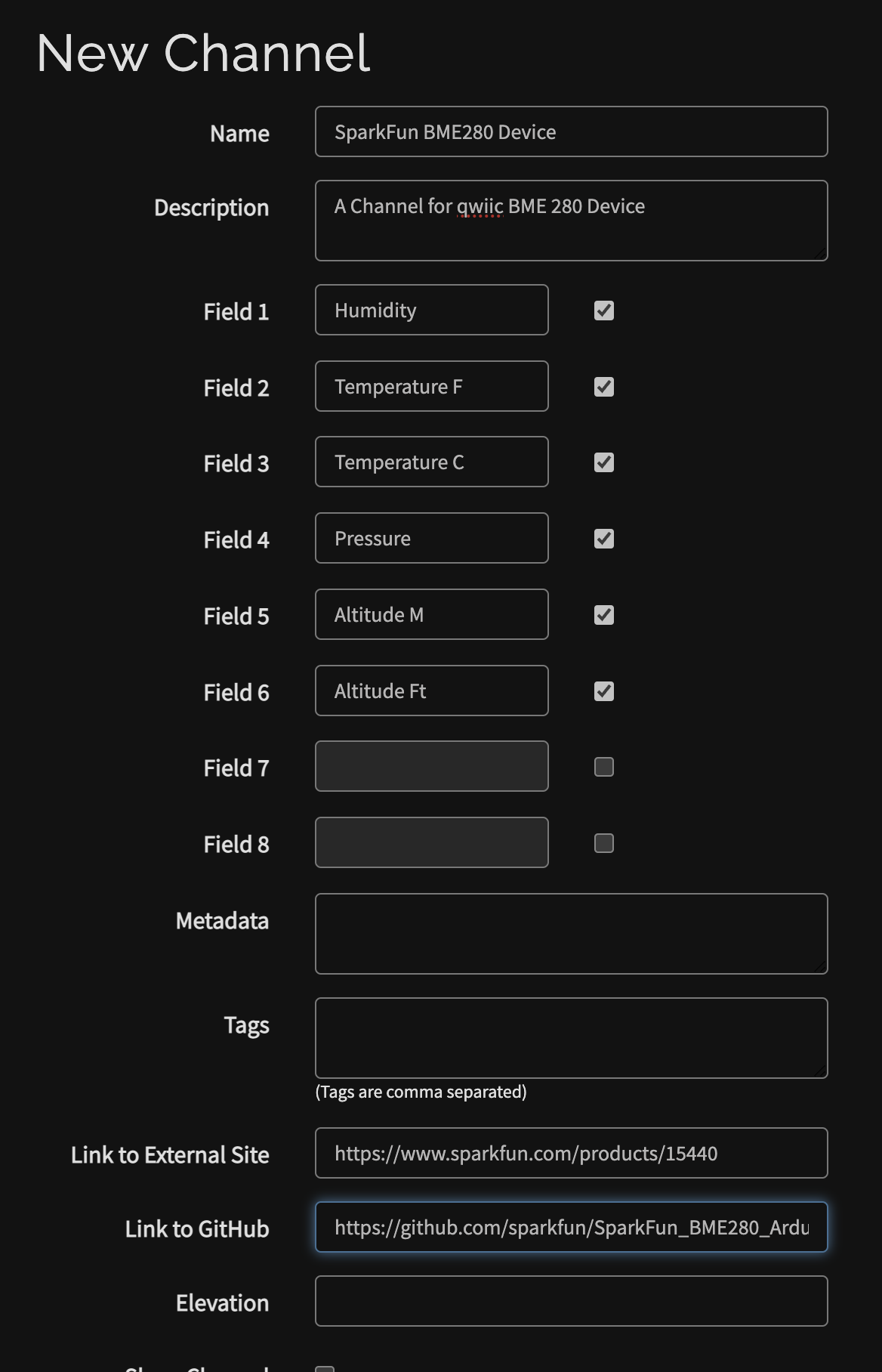
Once the values are entered, select save. ThingSpeak will now show list of **Channel Stats*, made up of line plots for each field specified for the channel.
Key note - at the top of this page is listed the Channel ID. Note this number - it is used to map a Flux Device to a ThingSpeak Channel.
The Flux ThingSpeak connector uses MQTT to post data to a channel. From the ThingSpeak menu, select Devices > MQTT, which display a list of your MQTT devices. From this page, select the Add a new device button.
On the presented dialog, enter a name for the MQTT connection and in the Authorize channels to access, select the channel created earlier. Note: More channels can be added later. Once you select a channel, click the Add Channel button. The selected Channel is then listed in the Authorized Channel table. Ensure that the Allow Publish and Allow Subscribe attributes are enabled for the added channel.
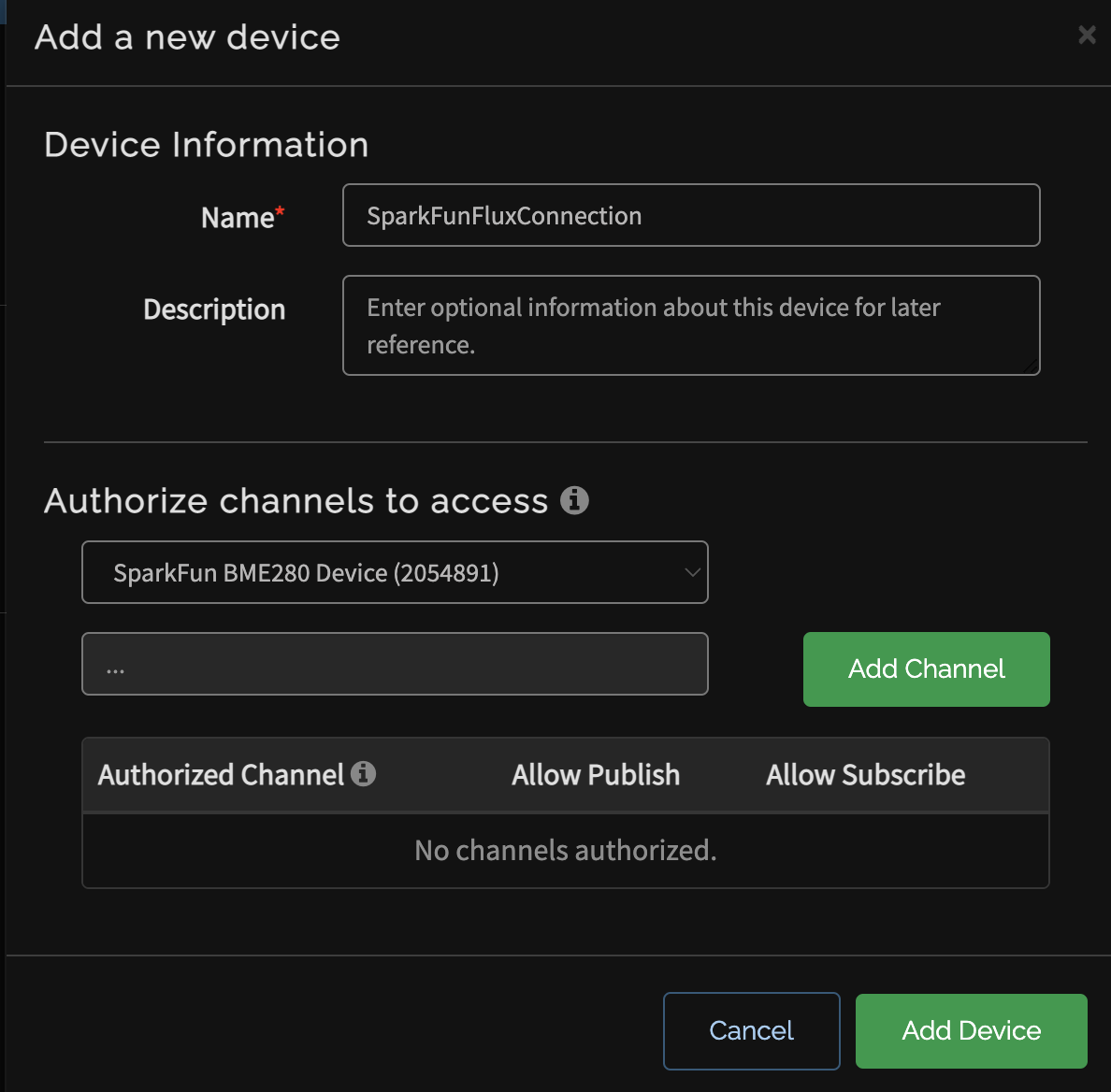
NOTE
>When the MQTT device is created, a set of credentials (Client ID, Username and Password) is provided. Copy or download these values, since the password in not accessible after this step.
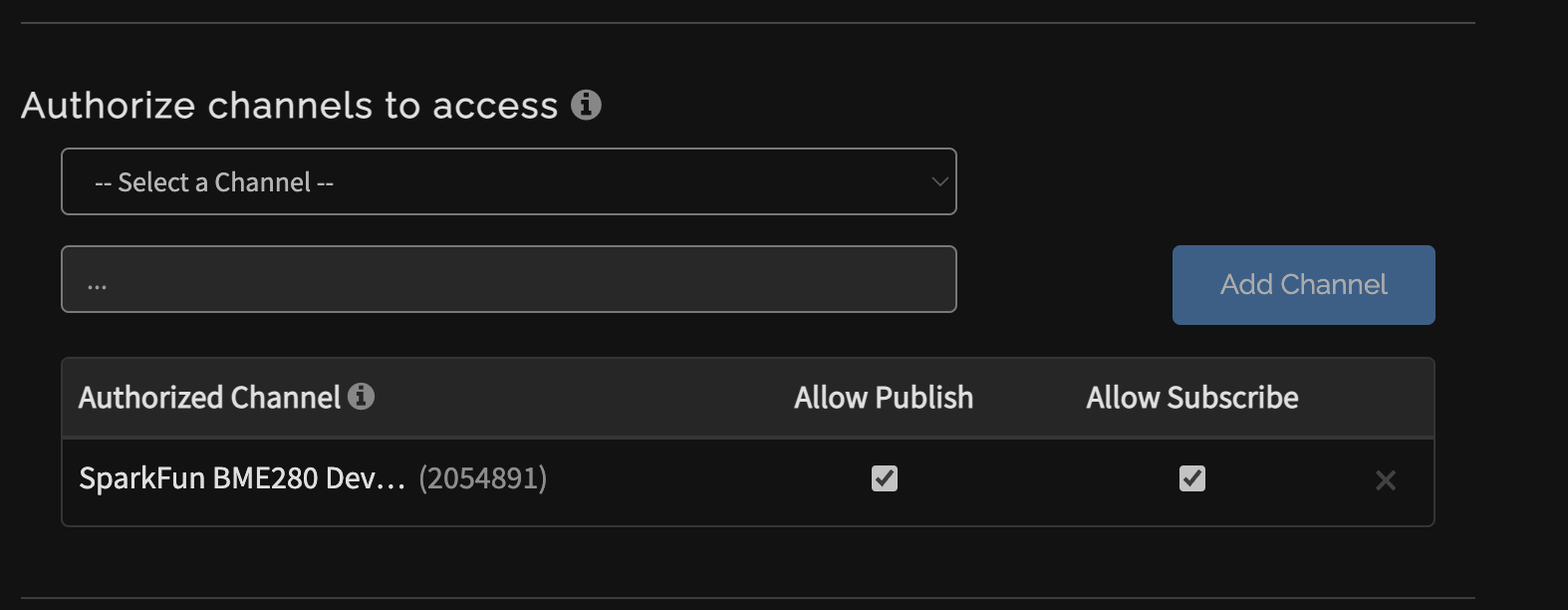
Channel Authorization.
At this point, the ThingSpeak Channel is setup for access by the Flux ThingSpeak connector.
To add a ThingSpeak Channel as a destination for the output of a Flux Framework based system, the application being created needs the following:
For this example, we show out to connect the output of a data logger in the framework to ThingSpeak.
First - add the ThingSpeak framework object to your application implementation
During the setup of the framework - at initialization, the following steps finish the basic setup of the ThingSpeak object.
Once the Flux ThingSpeak object is integrated into the application, the specifics for the ThingSpeak Channel(s) must be configured. This includes the following:
This value is hostname of the ThingSpeak mqtt connection, which is mqtt3.thingspeak.com as note at ThingSpeakMQTT Basics page. Note a secure connection is used, so the port for the connection is 8883.
The Client Name/ID is found under MQTT connection details listed in the Devices > MQTT section of ThingSpeak.
The Username is found under MQTT connection details listed in the Devices > MQTT section of ThingSpeak.
The connection password was provided when the MQTT device was created. If you lost this value, you can regenerate a password in the for the connection ob the MQTT Device information page.
You can download the cert file for ThingSpeak.com page using a web-browser. Click on the security details of this page, and navigate the dialog (browser dependent) to download the certificate. The downloaded file is the made available for the Framework to use (as a const string, or a file that is loaded at runtime)
The above property values must be set on the Flux ThingSpeak object before use. They can be set in code, like any framework object property, or via a JSON file that is loaded by the system at startup. For the ThingSpeak example outlined in this document, the entries in the settings JSON file are as follows:
NOTE
The Channels value is a list of [DEVICE NAME]=[Channel ID] pairs. Each pair is separated by a comma.
Once the connector is configured and the Flux Framework connected to ThingSpeak, as data is posted, the results are show on the Channel Stats page for your Channel. For the above example, the output of a SparkFun BME280 sensor produces the following output:
